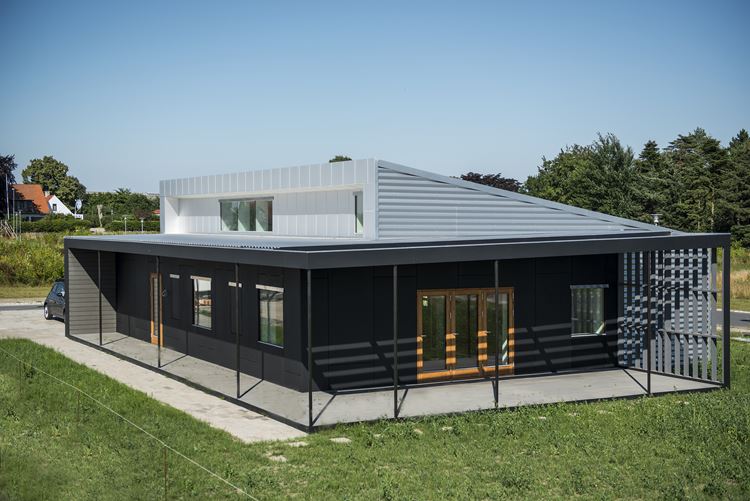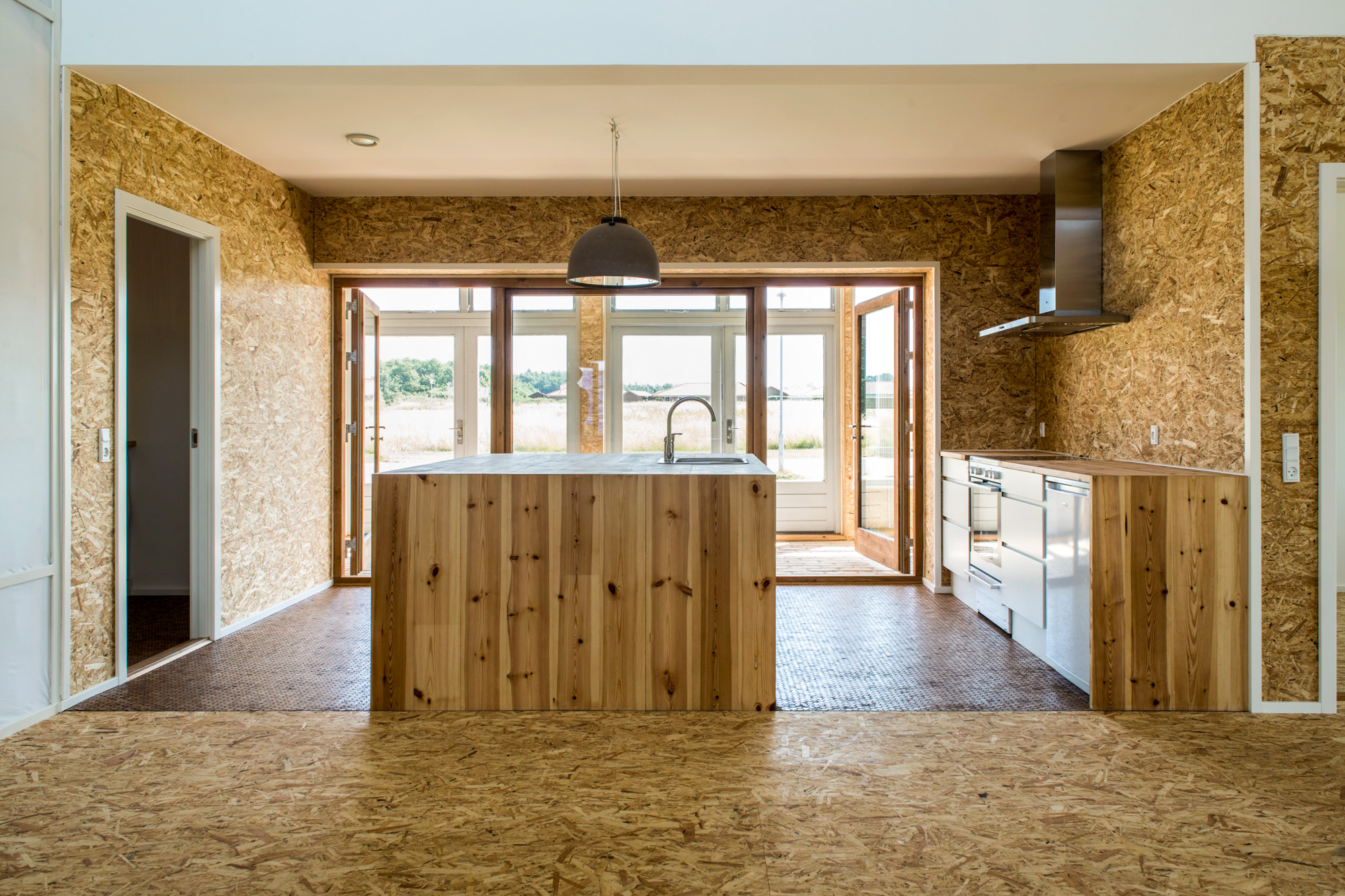Log ind info
When building a house it makes sense to recycle materials which have already paid their carbon bill, as it were. Or better yet: Develop processes which enable the upcycling and recycling of unusable materials in new building materials with greater utility value than the original materials.

The Upcycle House is part of a major development project: The MiniCO2 Houses. The project comprises a total of six houses, each of which illustrates different ways of reducing carbon emissions when constructing, running and maintaining a house.
The Upcycle House focuses on how recycling in ways which add value, can save resources and reduce carbon emissions associated with construction of a house.
Upcycling means recycling a waste product in the most efficient way possible - and improving on it. A good example of this is in the Upcycle House, designed by Lendager Group. The cladding on the terrace of the house consists of composite boards made of waste plastic and wood, and the ground floor insulation is made up of shredded polystyrene from a furniture dealer’s packaging containers, while the wall insulation is a granulate of treated newspaper and the kitchen floor is laid with sliced bottle corks.
In a world in which resources are scarce, upcycling means fewer ‘virgin raw materials’ are used, less is manufactured and carbon emissions are reduced. This means we can protect the climate while making much more sustainable use of the world's resources.
The basic structure of the Upcycle House is made up of two recycled shipping containers. The two containers are spaced so that the layout of the house is more or less square.
Examples of upcycling and recycling in the Upcycle House:
The exterior
The interior
The Upcycle House achieves major carbon savings because the recycled materials used have already been mass-produced, are readily available, and save the environment many tonnes of CO2.
Carbon emissions resulting from the Upcycle House's consumption of materials in its construction are 86% lower than those of the Reference House. The construction of the Upcycle House emits just 0.7 kg CO2/m2/year over a period of 50 years, compared with the Reference House, which emits 5 kg CO2/m2/year.
The reason for this is simple: the materials used have already been through the production cycle when they were made, and have already ‘paid their carbon bill’.

Facade created from recycled paper and bio-resin / Credit: Jesper Ray Manley, Jens Lohmann, Laura Jørgensen
Southern Denmark (Funen)
Lendager Group
2012-2014
Sustainable construction